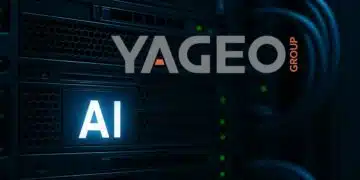UK-based Innervated Vehicle Engineering (IVe) is dedicated to enabling sustainable zero-emission freight by developing a hydrogen-powered van without compromising on the range or payload capacity. Skeleton’s supercapacitors support the transient power demand and recuperation of braking energy in this innovative van design.
Through the smart integration of a hydrogen fuel cell, IVe is aiming to revolutionize the light goods vehicle (LGV) sector. Their pilot van H2lix has a modular hydrogen fuel cell electric drivetrain and with a 1500 kg payload has a driving range of up to 600 km.
The UK’s “Road to Zero” commitment to zero tailpipe emissions for all new vehicles by 2030 will bring fundamental change to the transport industry.
Currently, the accepted solution for zero-emissions drivetrains is electric vehicles that can be delivered through two key technologies, either based on a battery or a hydrogen fuel cell. So far, the automotive sector has primarily driven battery-centric electrification, but for commercial vehicles (weight 3 tonnes and upwards) that technology imposes significant drawbacks of limited payload and range.
The limitations of available technology are a critical hindrance to achieving zero tailpipe emissions. The UK alone has approximately 2.25 million 3.5tonne LGVs. Without requiring a special license, they have always played a significant role in the commercial market being used in a variety of roles such as delivery, transport, or support vehicles in almost all business and service sectors. Strong growth in home delivery and Hub and Spoke distribution trends have increased demand for LGVs.
IVe has decided to address these drawbacks by developing a zero-emissions fuel cell electric vehicle that uses a custom Propulsion integrated Management (PiM) system, delivering a one-for-one replacement for existing diesel LGVs with equivalent range, payload, and performance. “LGVs continue to represent the highest growth rate across all commercial vehicle sectors.
We feel that decarbonizing home delivery must be a priority as these vehicles have a very transient drive cycle resulting in very inefficient after-treatment and poor emissions control. Considering that LGVs are mostly used in built-up areas, we can really make a difference to people’s lives and the environment in this sector,” says IVe’s COO Donal Mcilwaine. Customer trial vehicles of H2lix are expected in mid-2023.
On-board Energy Storage
Inside the H2lix, Skeleton’s supercapacitors support the transient power demand and recuperation of braking energy. They are also recharged by the fuel cell if necessary to ensure they are ready for any future operating state. According to Mcilwaine, choosing SkelMod 51V Module was an obvious choice.
“Skeleton’s supercapacitors have the power-energy balance we need for our powertrain and their engineers helped us define how best to integrate them into our system. We expect supercapacitor to be fundamental to the system efficiency for a very long time through all evolution stages.”
Ive is working towards prolonging H2lix’s lifecycle to 15 years which is 128% longer than of most diesel vans. “This is down to how we manage the system and its thermal environment. Using supercapacitors will allow us to be very kind to the fuel cell and battery. This enables us to ramp the power up and down in a very controlled manner while keeping the thermal environment under close control. Supercapacitors help us reduce the requirement for peak power from the fuel cell,” explains Donal Mcilwaine.

































